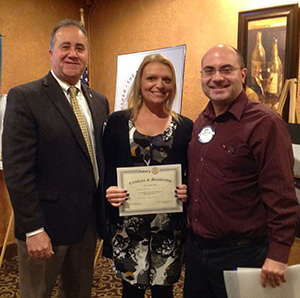
The restored bridge over the Neretva River in Mostar, a symbol of peace in Bosnia.
By Anton Polsterer, past governor of District 1910 and past chair of the Intercountry Committees Executive Council
I joined Rotary in Vienna in 1986 and transferred to the Rotary Club of Moscow while working in Russia from 1989-92. After moving back to Austria, I became governor of the district covering Bosnia & Herzegovina, Croatia, Hungary, Slovenia, and Austria. After years of war and totalitarian government rule, these communities longed for freedom and peace.
Our district had 130 clubs with more than 5,000 Rotarians. We represented five different nationalities and languages. Croatia and Bosnia were heavily hurt by the civil war in Yugoslavia in the 1990s. Bosnia and Herzegovina had a pre-war population of 4.5 million people including Orthodox Serbians, Catholic Croatians, and Bosnian Moslems. During the war, close to two million people, almost 50 percent of the population was displaced within their own country to create “ethnic” regions. From the very beginning, we have aimed for ethnic diversity in our clubs, which wasn’t easy after all the displacement.
The real breakthrough came with the Rotary Club of Mostar (Bosnia), chartered in 2002. The club started many projects in …read more
Source:: Rotary International Blog


